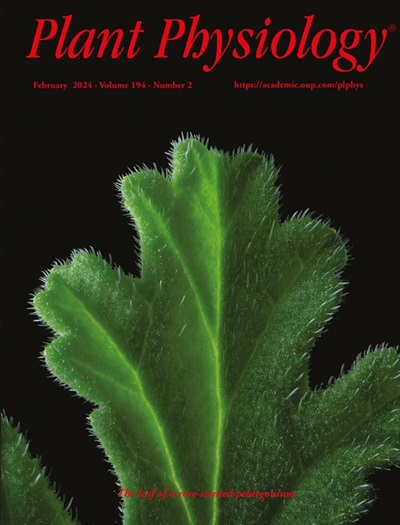Multiscale Imaging Locates Thermogenic Tissues and Reveals the Role of Ca2+ in Floral Thermogenesis
IF 6.5
1区 生物学
Q1 PLANT SCIENCES
引用次数: 0
Abstract
Floral thermogenesis is an ancient feature that facilitates mutualism between flowers and pollinators. Yet localization of specific thermogenic tissues within floral organs has received little attention. Here, we integrated infrared (IR) thermal imaging and micro X-ray fluorescence (μ-XRF) to localize the thermogenic tissues in the lotus (Nelumbo nucifera Gaertn.) receptacle. IR imaging preliminarily identified the primary thermogenic tissues of the receptacle as the carpels and epidermis. The calcium distribution visualized by μ-XRF complemented the results of IR imaging, indicating that the thermogenic tissues include the epidermis and the upper parts of the carpels. This ensures that heat reaches the chamber formed by the petals and receptacle over the shortest distance, thereby minimizing heat loss. Additionally, we observed a higher rate of Ca2+ transport from the apoplast to the cytosol and upregulation of genes associated with mitochondrial calcium uniporters (MCU) at the thermogenesis initiation stage as compared to the pre-thermogenic stage. Increasing the cytosolic Ca2+ (cCa2+) concentration reversed the inhibition of alternative respiratory pathways, further illustrating the close relationship between Ca2+ concentration and thermogenesis. Our research not only presents a precise method for identifying thermogenic tissues in plants but also demonstrates the evolutionary efforts of lotus to maximize energy utilization efficiency.多尺度成像定位产热组织并揭示Ca2+在花产热中的作用
花的产热作用是一种古老的特征,它促进了花和传粉者之间的相互作用。然而,花器官中特定产热组织的定位却很少受到关注。利用红外热成像技术和微x射线荧光技术,对荷花(Nelumbo nucifera Gaertn.)花托中的产热组织进行了定位。红外成像初步鉴定花托的主要产热组织为心皮和表皮。μ-XRF观察到的钙分布与红外成像结果相吻合,表明产热组织包括表皮和心皮上部。这样可以确保热量在最短的距离内到达由花瓣和花托组成的腔室,从而最大限度地减少热量损失。此外,我们观察到与产热前阶段相比,产热起始阶段线粒体钙单转运蛋白(MCU)相关基因的上调,Ca2+从外质体到细胞质的运输速率更高。增加细胞质内Ca2+ (cCa2+)浓度逆转了替代呼吸途径的抑制,进一步说明Ca2+浓度与产热之间的密切关系。我们的研究不仅提供了一种精确的方法来识别植物中的产热组织,而且证明了莲花为最大限度地提高能量利用效率而进行的进化努力。
本文章由计算机程序翻译,如有差异,请以英文原文为准。
求助全文
约1分钟内获得全文
求助全文
来源期刊

Plant Physiology
生物-植物科学
CiteScore
12.20
自引率
5.40%
发文量
535
审稿时长
2.3 months
期刊介绍:
Plant Physiology® is a distinguished and highly respected journal with a rich history dating back to its establishment in 1926. It stands as a leading international publication in the field of plant biology, covering a comprehensive range of topics from the molecular and structural aspects of plant life to systems biology and ecophysiology. Recognized as the most highly cited journal in plant sciences, Plant Physiology® is a testament to its commitment to excellence and the dissemination of groundbreaking research.
As the official publication of the American Society of Plant Biologists, Plant Physiology® upholds rigorous peer-review standards, ensuring that the scientific community receives the highest quality research. The journal releases 12 issues annually, providing a steady stream of new findings and insights to its readership.
 求助内容:
求助内容: 应助结果提醒方式:
应助结果提醒方式:


